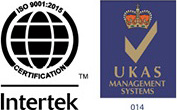A Mini Guide to Understanding 1 & 2 Loop FIBC Bags

Rigorously tested and designed bulk bags, sometimes referred to as Flexible Intermediate Bulk Containers (FIBC) are essential for the transportation and storage of bulk products. Bulk bags are mostly made of woven polypropylene. This material holds large amounts of dry goods including sand, stone, fertilizer, plastic granules, and different industrial supplies. This article examines the designs, applications, and reasons for the popularity of 1 & 2 loop FIBC bags in various industrial settings.
Understanding 1 & 2 Loop FIBC Bags
1 and 2 loop FIBC bags are built to effectively and economically handle the bulk materials. One of the reasons to use polypropylene in making FIBC bags – is strong and flexible, making it a perfect fit for a range of products. FIBCs are widely used in industrial sectors such as agriculture, chemical, and construction.
The main benefits are the large weight capacity, portability, and effective space use. Furthermore, FIBCs may be fitted with a range of safety features, such as anti-static technologies to guarantee the safe handling of combustible products and UV protection to avoid deterioration.
Detail Features Of 1 & 2 Loop FIBC Bags
· 1 Loop FIBC Bags
This type of FIBC bag usually has a single, strong loop that is used to lift and move the bag. The filling and discharging procedures are made easier by this design, which makes these bags perfect for light to moderately heavy loads. They work especially well with tall packaging and dispensing systems that make effective use of vertical space.
· 2 Loop FIBC Bags
Although they work similarly to 1 loop versions, 2 loop FIBC bags offer more support. They work better with bulkier and heavier materials because of this attribute. When handling products that need additional stability during transit, they provide a more balanced lift, which is essential.
· Comparing FIBC Bags with Other Types
1 and 2 loop FIBC bags usually accommodate different handling and loading machinery than 4 loop FIBC bags. The decision between these bags frequently comes down to the handling facilities that are available and the logistics needs. For instance, 4 loop bulk bags are typically used for large, bulky, highly supported items that are routinely carried by a forklift.
Versatile Uses of 1 & 2 Loop FIBC Bags
One and two loop FIBC bulk bags are indispensable due to their robust design and adaptability in a range of industries.
· These bags give an effective and efficient performance to handle bulk seeds, cereals, and fertilizers in agriculture while transporting or storing.
· The safe and stable confinement throughout travel provided by 1 & 2 loops FIBC bags offer secure handling of powdered products. Thus, beneficial to the chemical industry.
· These FIBCs are also perfect for transporting big loads of sand, gravel, and other building supplies in the construction industry.
Their streamlined form flawlessly satisfies the logistical requirements of these many industries by making loading, lifting, and storing easier.
Choosing Criteria For 1& 2 Loop FIBC Bags
The material to be handled has a major role in selecting the appropriate FIBC bag type. The product’s bulk density, required safety features, and industry-specific criteria (such as food grade standards for consumables or chemical resistance for hazardous products) are among the factors to take into account. In addition to logistical factors like bag handling facility, storage capabilities and method of transportation, volume, and total weight are important in choosing the right kind of bag.
Proper Procedures for Handling 1 & 2 Loop FIBC Bags
1. Techniques for Loading and Unloading
FIBC safety and integrity must be guaranteed during loading and unloading by using the right methods and tools. Hoists and forklifts are frequently used, however, the technique frequently relies on the physical characteristics of the objects being carried and the design of the loop.
2. Storage Advice
Whether kept indoors or outdoors, FIBC bag storage needs to be carefully controlled to avoid physical damage and environmental deterioration. To preserve the integrity and security of the contents being housed, proper stacking and spacing are crucial.
3. Upkeep and Examine
To increase the longevity of 1 and 2 loop FIBC bags, regular examinations for any wear and tear are required. Regular inspections should be conducted according to the manufacturer’s instructions on cleaning and decommissioning old bags, especially about the loops and seams, where stress may be seen.
Concerns with Regulation and Compliance
Using 1 & 2 loop FIBC bags requires strict adherence to regional and international laws as well as standards. Ensuring adherence to local safety legislation and ISO standards throughout the production and application processes safeguards the environment and end users. Reputable manufacturers’ traceability and quality control ensure that the FIBCs fulfill all required performance and safety standards.
Prospective Patterns and Advancements in FIBC Technology
With advancements in FIBC technology centered on efficiency and sustainability, the future appears bright. These bags’ negative environmental effects are being mitigated by the increasing use of recycled materials and biodegradable alternatives. The usefulness of FIBC bags is also being improved by developments like moisture management technology to maintain the integrity of hygroscopic materials and RFID tags for tracking.
Summary
In the industrial sector, one and two loop FIBC bags are useful instruments that provide customized solutions for effective and secure material handling. To get the most out of them, you have to handle regulations, compliance difficulties, and their unique uses.
With a strong focus on sustainability and ongoing developments in material technology, 1 & 2 loop FIBC bags are expected to become even more important in global supply chains. It is advised that industry experts consult with knowledgeable manufacturers such as Umasree Texplast to make sure they are receiving the greatest possible solution for their requirements.
This handbook ensures the safe and effective handling of materials across a range of sectors by providing a foundation for suppliers and users to comprehend and maximize the special qualities provided by 1 & 2 loop FIBC bags.





